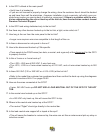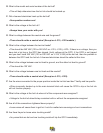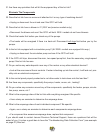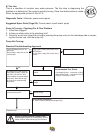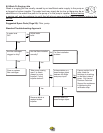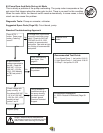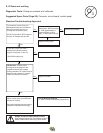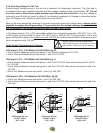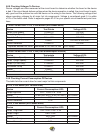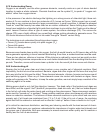
43
8.11 Troubleshooting A Thermal Pump Cutout
1.
2.
3.
4.
Verify that the voltage to the hot tub is 240 VAC (120 or 240 VAC for J-315, J-325)
±10%. An insuf cient voltage supply can cause the motor to pull too much current
and to overheat. This situation must be corrected.
Check the voltage to the hot tub. Remember, the power company is required by law
to provide the correct voltage to the customer. They will come out and check sus-
pected problems (in most cases, free of charge).
If the voltage is OK, examine the environment in which the hot tub is installed. Hot sun, hot weather,
and the lack of a breeze can cause heat buildup in the equipment bay in addition to the normal heat
produced by the pump. This can raise the temperature high enough to cause the thermal cutout to
trip. There are two possible solutions to thermal cutout problems which are not due to low line volt-
age. One is to change the lter cycle periods so that they do not coincide with the hottest time of
the day and peak power consumption hours. Another is to ventilate the equipment bay. Call Jacuzzi
Premium Technical Support for advice on this matter.
If there seems to be no overheating problem, yet the motor keeps cutting out, the pump’s thermal
switch may be bad. In this case the pump should be replaced.
mmm......
8.12 Pump Hums And Will Not Start
If the pump impeller is not “frozen”, this condition almost always indicates a bad start
capacitor. This component is inside the motor housing.
Diagnostic Tools: Voltmeter.
Suggested Spare Parts (Page 59): Pump and motor, circuit board.
Standard Troubleshooting Approach
1.
2.
Press the Jets 1 button.
Check voltage at pump 1 (low speed) test points 18 and 19 for 240 VAC (120 VAC for J-315, J-325).
If there is no voltage, replace the circuit board. If voltage is present, the pump needs to be repaired
or replaced.
If pump 1 runs in low speed but hums in high speed, make sure the circuit board is not sending voltage
to both speeds at the same time. When voltage exists while in low speed at test points 18 and 19, there
should be no voltage at test points 18 and 20. Conversely, when voltage exists while in high speed at
test points 18 and 20, there should be no voltage at test points 18 and 19. If voltage is present across
both sets of test points at the same time, replace the circuit board. Refer to pages 50 and 51 for the
circuit board layout.
Recommended Test Points (Pages 50 and 51):
• Pump 1 - Low speed test points 18 and 19; high speed test points 18 and 20.
• Pump 2 - High speed test points 21 and 22.



